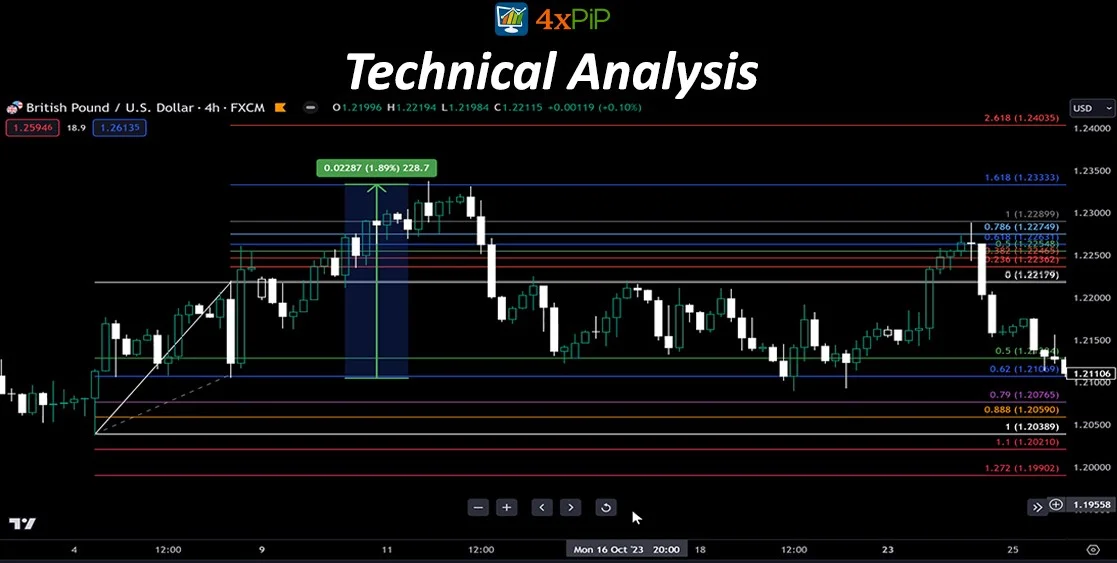In the intricate world of financial markets, stock analysis stands as a beacon for investors and traders seeking to navigate uncertainties. At 4xPip, your go-to platform for trading tools and expertise, we recognize the pivotal role stock analysis plays in making well-informed decisions. For personalized guidance and a suite of trading tools, including those designed for stock analysis, reach out to us at [email protected].
Understanding Stock Analysis:
Stock analysis is the cornerstone of strategic decision-making in the ever-shifting landscape of financial markets. Analysts employ various methods to dissect the intricacies of specific trading instruments, entire sectors, or the broader market. At its core, stock analysis is about foreseeing future market activities, a task that demands a nuanced understanding of different analysis techniques.
Key Takeaways:
The practice of stock analysis involves harnessing information and data to decipher market trends and make investment decisions. While there are various approaches, two primary methods take the spotlight: fundamental and technical analysis. Additionally, sentiment analysis and quantitative analysis offer alternative perspectives for those exploring diverse strategies.
Fundamental Analysis: Decoding Financial Health:

In the realm of stock analysis, fundamental analysis stands tall, delving into the core financial elements that underpin a company’s health. Analysts scrutinize data from financial statements, economic reports, and market indicators to gauge the fundamental strength of a company. The focus is on profitability, liquidity, solvency, efficiency, growth trajectory, and leverage.
Fundamental Analysis and Ratios:
Digging into a company’s financial health involves an in-depth examination of ratios that reflect various aspects. The current ratio and debt ratio, derived from the balance sheet, offer insights into a company’s short-term financial viability and its leverage. Comparative analysis, both within the industry and across historical performance, enhances the understanding of a company’s standing.
Comparative Information and Insights:
To gain a comprehensive view, stock analysts often compare a company’s current financial state with its historical performance. Additionally, they may juxtapose it against peer companies within the same industry. The operating profit margin, extracted from income statements, serves as a crucial metric, revealing how much revenue remains after covering operating expenses.
Technical Analysis:

While fundamental analysis dives deep into financial intricacies, technical analysis takes a different route, relying on historical price movements to predict future trends. The methodology involves studying charts, identifying patterns, and establishing support and resistance levels. Technical analysts focus on price and volume dynamics, as well as the broader demand and supply factors influencing the market.
Technical Analysis and Comparability:
Charts become the canvas for technical analysts, offering a graphical representation of a stock’s journey over a defined period. Key elements include identifying support and resistance levels, where breaches can signal shifts in market sentiment. However, the effectiveness of technical analysis hinges on the dominance of supply and demand forces in driving price trends.
Factors Influencing Technical Analysis:
Technical stock analysis thrives when supply and demand forces are the primary drivers of price trends. External factors, such as stock splits, mergers, or unexpected events like a class action lawsuit or management changes, can disrupt the reliability of technical analysis predictions.
Forms of Stock Analysis:
Beyond the well-trodden paths of fundamental and technical analysis, analysts can explore alternative approaches to glean insights into stock prices. Sentiment analysis involves gauging public perception through social media and news platforms. Quantitative analysis, akin to technical analysis, relies on complex calculations and statistical models to project future prices.
Limitations of Stock Analysis:
Stock analysis, while a potent tool, comes with its set of challenges and limitations. Analysts often work with incomplete information, as companies may not disclose all relevant details. Uncertainty looms large, and bias can creep in, especially when dealing with non-anonymous data. The complexity of stock analysis demands continual vigilance and adaptation to ever-changing variables.
Combining Analytical Approaches:
Investors often find success in combining fundamental, technical, and quantitative analyses. Each technique contributes a unique perspective, and the choice depends on the available information and investor objectives. Crafting the optimal investment strategy necessitates a nuanced understanding of a company’s financial position, industry research, and the application of sophisticated financial models.
Navigating Price Movements:
For investors seeking to decode the mysteries of stock price movements, strategic information leverage is key. Researching stocks involves a meticulous process of collecting and filtering public information, recent filings, news, social media activity, and financial statements. Beginners can ease into the process by focusing on relevant data, and industry benchmarks, and comparing a company’s performance against broader market activities.
Summary:
In conclusion, the effectiveness of stock analysis lies in its integration into a well-rounded investment strategy. Both fundamental and technical analyses, whether employed independently or in tandem, offer valuable insights for crafting informed decisions. Whether you’re a seasoned investor or a newcomer, 4xPip provides the tools and guidance needed to navigate the ever-evolving financial markets. Explore our offerings at [email protected] and stay ahead in the pursuit of financial success.











